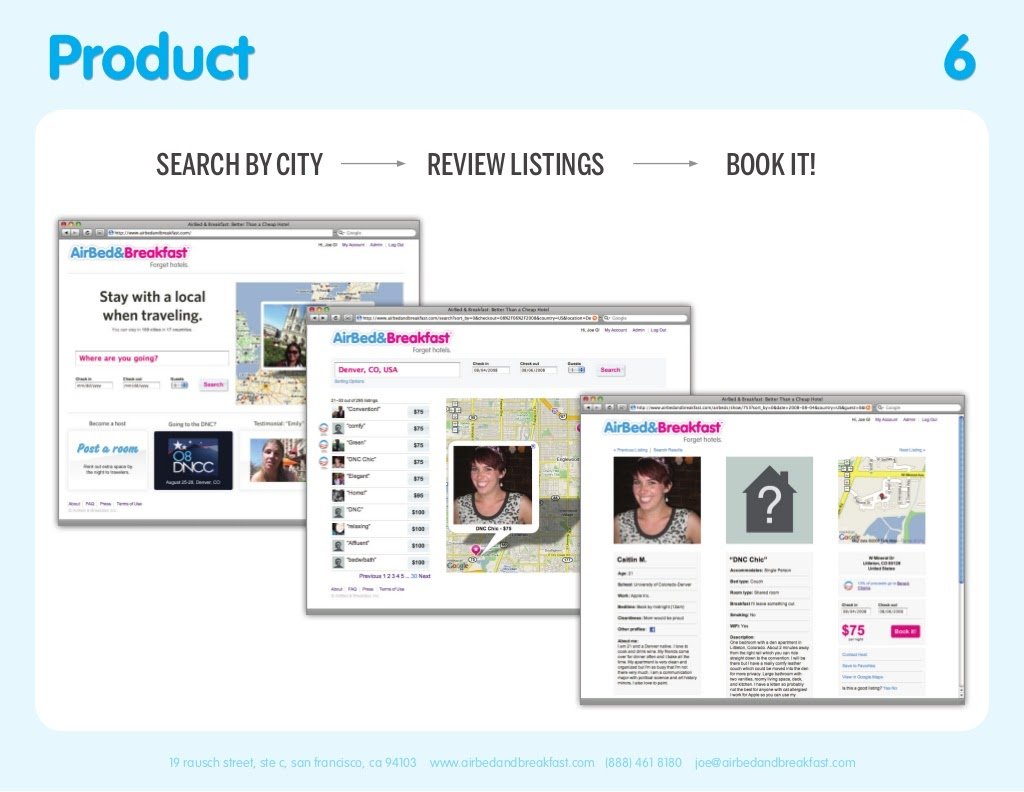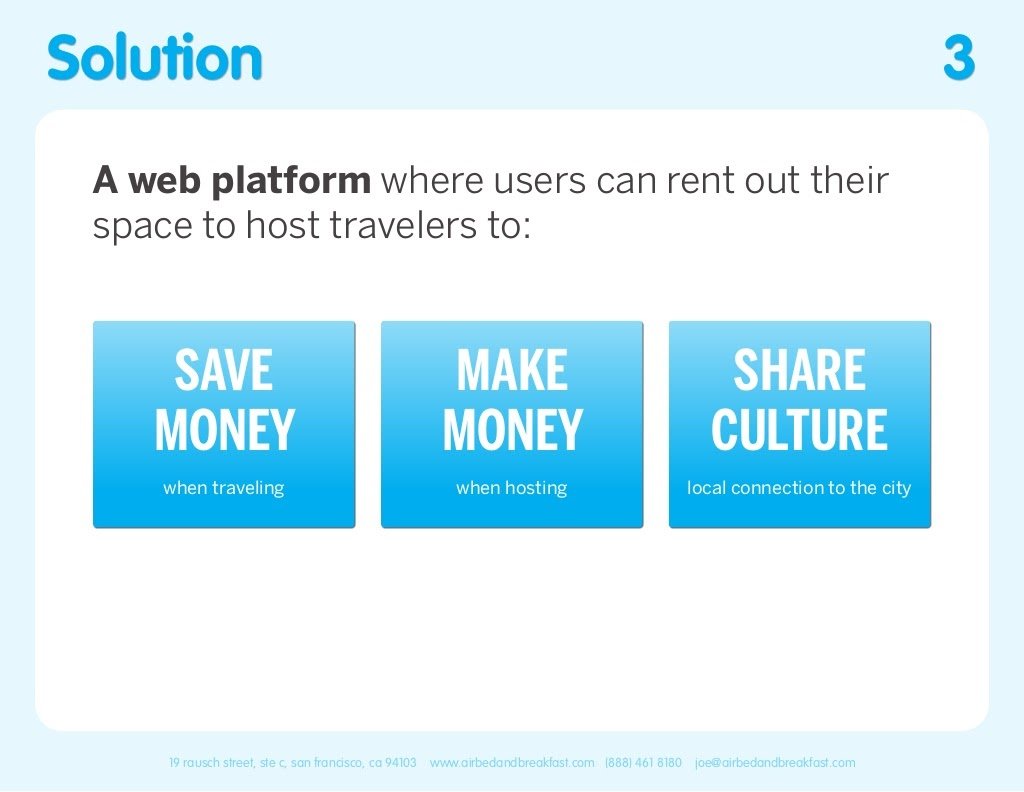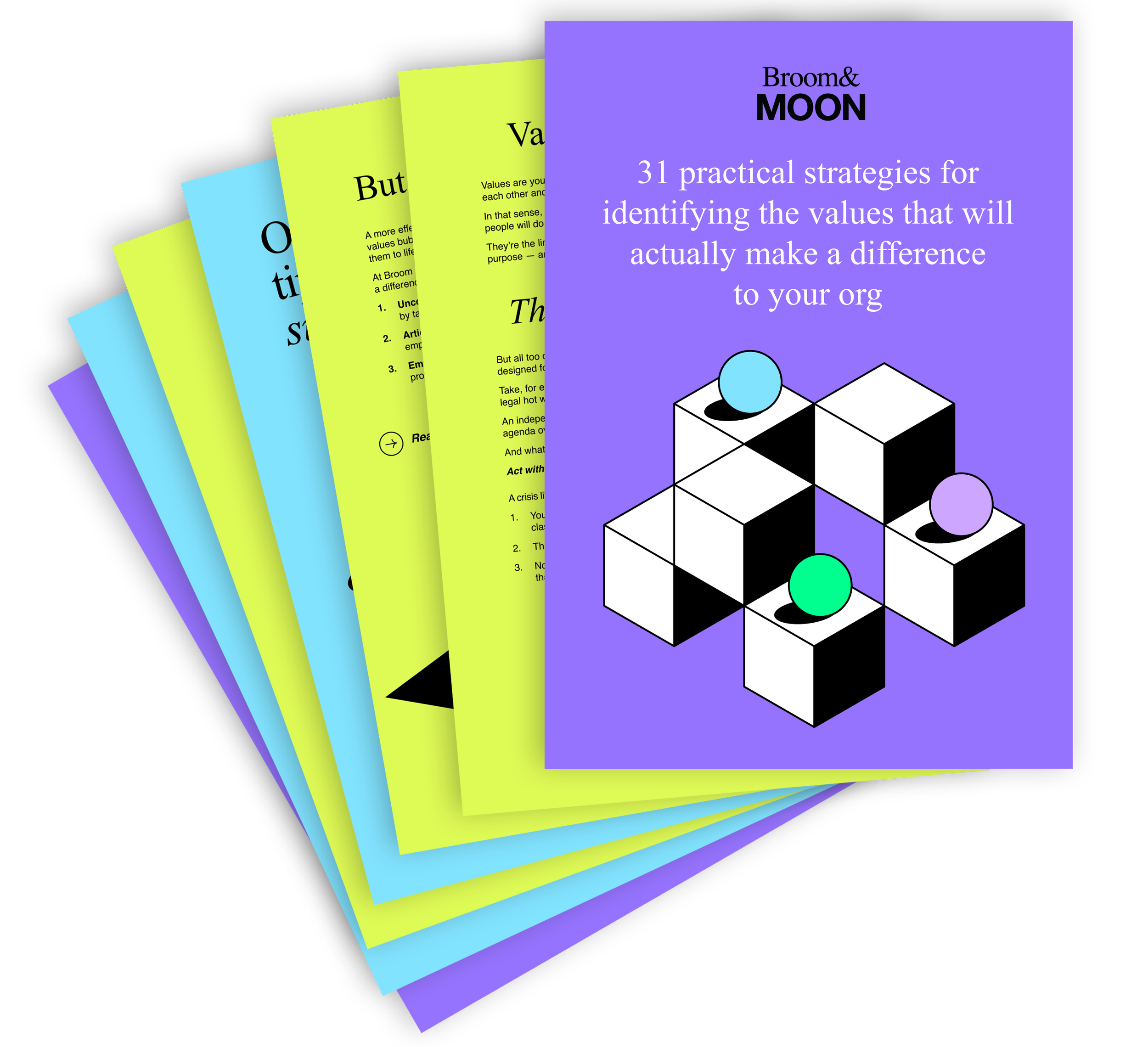Is this the greatest pitch deck of all time?
When we’re helping clients create pitch decks — whether for investment or sales — we always find it helps to show them an example to aim for.
Enter the legendary AirBnB deck, which in the early days of the start-up, famously won the founders $600K in seed funding.
If you’ve never come across this deck before, prepare to be blown away by its clarity, simplicity and persuasive power.
Here’s a selection of slides:



And here are three things we can learn from them.
Lead with benefits not features
The AirBnB deck starts with a bang by introducing a problem — and presenting AirBnB’s solution.
In short, they’re following the age-old sales advice to lead with benefits, not features — in other words, the difference their product makes, not how it works.
In our experience, the temptation to talk about a product’s features seems to be particularly acute in tech.
Now, you may be rightly proud of the size or capabilities of your large language model (or whatever the technology is that underpins your product or service).
But your technical smarts are of secondary importance to that investor. They want to hear a story that inspires them and gives them confidence their money will see a return — so save the tech talk for another day.
2. Be brutal with your word count
Slide one is the most text-heavy, with 35 words. In comparison, we’ve seen slides from investor decks that are nudging 200 words or more.
The problem with throwing too many words at a thing?
If you try to say everything, you risk saying nothing.
Over-wordy slides particularly bad if the deck is designed for a live presentation — because while you’re talking, your audience will be reading. They won’t be able to help themselves.
That means their attention will be split between you and the screen — which will dilute your message and drain your confidence.
Also, any audience can read faster than any presenter can speak. So while you’re on point 2, they’ll be on point 6 thinking “get on with it!”. Not exactly conducive to the beginnings of a mutually beneficial relationship.
If you need to, create different decks for different purposes.
3. Observe the rule of 3
Whoever put the AirBnB deck together was obviously trained in the principles of rhetoric — or the art of persuasion.
In particular, the author is clearly an adherent of the age-old rhetorical device known as the tricolon — in other words, presenting information in groups of three.
It’s even more powerful when that group of three is made up of clauses with the same structure, like:
Save money. Make money. Share culture.
Such wording is on a par with other famous tricolons — like Caesar’s I came, I saw, I conquered or Churchill’s Blood, sweat and tears. All are pithy and memorable.
So if you’ve four, five or even more things on a slide, try to create a structure by grouping your ideas under three headings instead.
Need help creating your investor deck? Get in touch!


